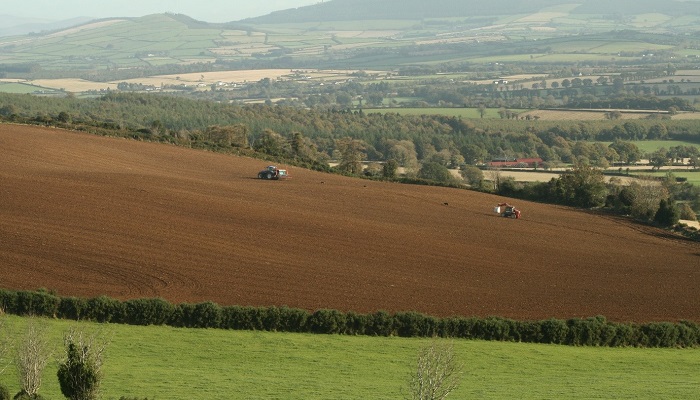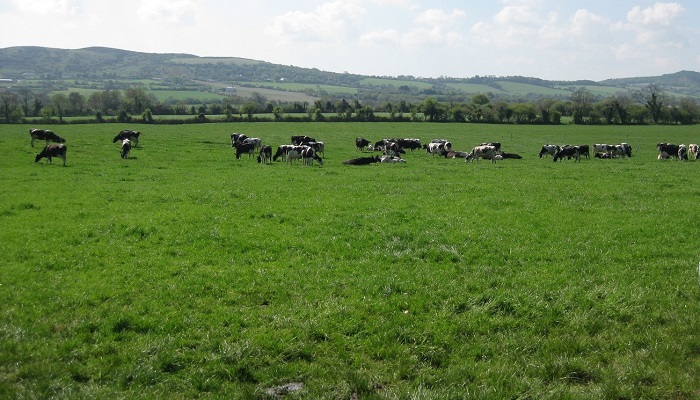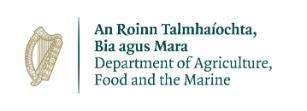23 February 2022
Water Quality Modelling in the Agricultural Catchments Programme

Daniel Hawtree, Catchment Science Modeller, Agricultural Catchments Programme discusses hydrologic models as tools for water quality management. This model work is currently focused on County Wexford
Photo above: The Castledockrell catchment in county Wexford
Hydrologic Models as Tools for Water Quality Management
Hydrologic models help us to understand how water and nutrients move through the landscape and can be useful tools for understanding water quality in agricultural settings. Models can estimate how nutrients (e.g., nitrogen and phosphorus) from agricultural sources may move through the landscape in different ways in response to changes in land management or may respond differently depending on the characteristics of the landscape (e.g., different land-cover, topography, soils). This allows models to explore different scenarios that may affect water quality, such as agricultural intensification or deintensification (e.g., changes in nutrient inputs) or to factors such as changes in rainfall patterns due to climate change. By considering these scenarios, we can examine how factors that affect water quality interact with each other in complex and sometimes unexpected ways. Models can help us to better understand this complexity by providing numerical estimates of changes that may occur, which other methods are less well-suited to provide (e.g., expert option).
Good Data Is the Key to Good Models
The most important ingredient for making good models is the data used to create them. In this respect the Agricultural Catchments Programme (ACP) is well placed for creating our models, given the world-class data sets that have been collected at the long-term monitoring stations in these sites. In the six study sites of the ACP, over a decade’s worth of data has been collected for a range of key hydro-chemical variables (e.g., streamflow, nitrates, phosphorus). This data has been collected every 10-minutes at the stream outlet at each site and is supplemented by “snapshot” sampling less frequently at other key points upstream. This extensive dataset provides us with the raw material for generating and testing models in a robust way. This gives us a higher degree of confidence in the reliability of our model simulations than would otherwise be possible, making them much more valuable tools for understanding water quality.
Current Work is Focused on County Wexford
The modeling work of the ACP is currently focused on simulating long-term nutrient trends (N and P) at two sites in county Wexford. One site is known to be more “phosphorus risky” due to heavier soils, while the other is more “nitrogen risky” due to lighter soils. The contrast of these two sites will test the model’s ability to represent these different types of conditions, which are common in Irish agricultural landscapes. In these sites the model will be used to examine the long-term trends in water quality under different scenarios of agricultural intensification or deintensification, and to see how these relate to different management options. This study will help to establish a baseline approach to modelling that will be further developed and applied in all the ACP sites, and hopefully will be a useful tool for water quality management in the Irish agricultural landscapes.

Photo above: The Ballycanew catchment in county Wexford
In the video clip below ACP Hydrochemist Researcher, Jason Gallowa,y gives us an overview of the ‘sub catchment’ approach for water research
Further information
The Agricultural Catchments Programme (ACP) is running a week of social media releases showcasing some of its activities from Monday 21 February to Friday 25 February. The week’s theme is “Working Together for Water Quality”.
Acknowledgement
 The Agricultural Catchments Programme (ACP) was established in 2008 and is funded by the Department of Agriculture, Food and the Marine
The Agricultural Catchments Programme (ACP) was established in 2008 and is funded by the Department of Agriculture, Food and the Marine
